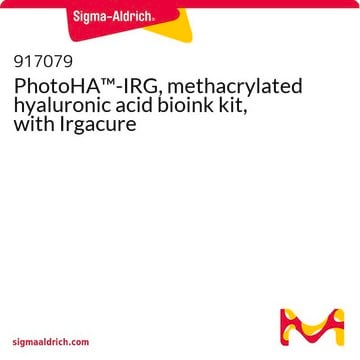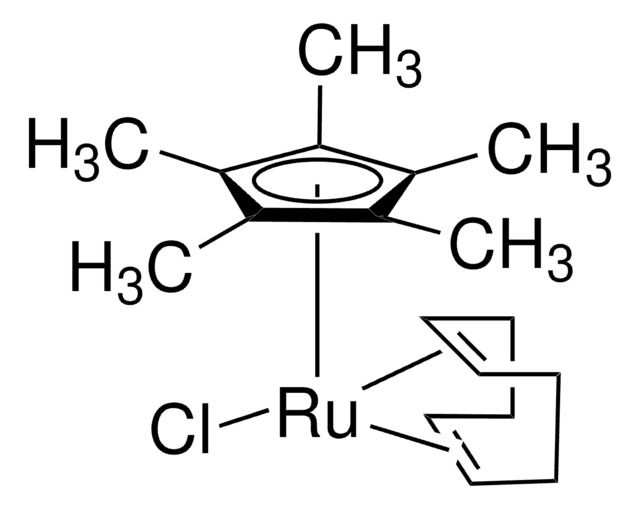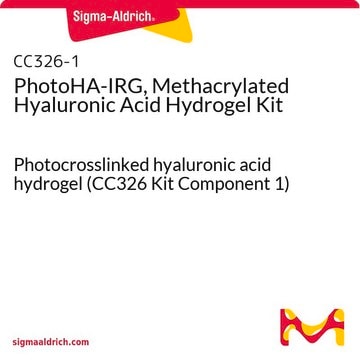推薦產品
描述
Methacrylated hyaluronic acid:
Degree of methacrylation: ≥ 45-65%
Product components :
Methacrylated hyaluronic acid (100 mg)
Ruthenium (100 mg)
Sodium persulfate photoinitiator (500 mg)
品質等級
無菌
sterile; sterile-filtered
分子量
Mw 100-150 kDa
儲存溫度
−20°C
應用
PhotoHA™-RUT bioink kit consists of methacrylated hyaluronic acid (HAMA) and ruthenium photoinitiator. Hyaluronic acid is the most abundant glycosaminoglycan in the body being an important component of several tissues throughout the body. While it is abundant in extracellular matrices, hyaluronic acid also contributes to tissue hydrodynamics, movement and proliferation of cells, and participates in a number of cell surface receptor interactions. The photoinitiator consists of ruthenium and sodium persulfate to be formulated in 1X cell culture media or PBS, which allows visible light photocrosslinking of the printed structure at 400-450 nm. PhotoHA™-RUT provides native-like 3D HA gels, and the final gel stiffness can be customized by changing HA concentrations and crosslinking.
法律資訊
PhotoHA is a trademark of Advanced BioMatrix, Inc.
訊號詞
Danger
危險分類
Acute Tox. 4 Oral - Ox. Sol. 3 - Resp. Sens. 1 - Skin Irrit. 2 - Skin Sens. 1 - STOT SE 3
標靶器官
Respiratory system
儲存類別代碼
5.1B - Oxidizing hazardous materials
Sudhir Khetan et al.
Cryobiology, 90, 83-88 (2019-08-06)
While significant progress has been made in directing the behavior of cells encapsulated within three-dimensional (3D) covalently crosslinked hydrogels, the capacity of these materials to support in situ cryopreservation of cells directly within the gels has not been assessed. Here
Michelle T Poldervaart et al.
PloS one, 12(6), e0177628-e0177628 (2017-06-07)
In bone regenerative medicine there is a need for suitable bone substitutes. Hydrogels have excellent biocompatible and biodegradable characteristics, but their visco-elastic properties limit their applicability, especially with respect to 3D bioprinting. In this study, we modified the naturally occurring
Active Filters
我們的科學家團隊在所有研究領域都有豐富的經驗,包括生命科學、材料科學、化學合成、色譜、分析等.
聯絡技術服務











